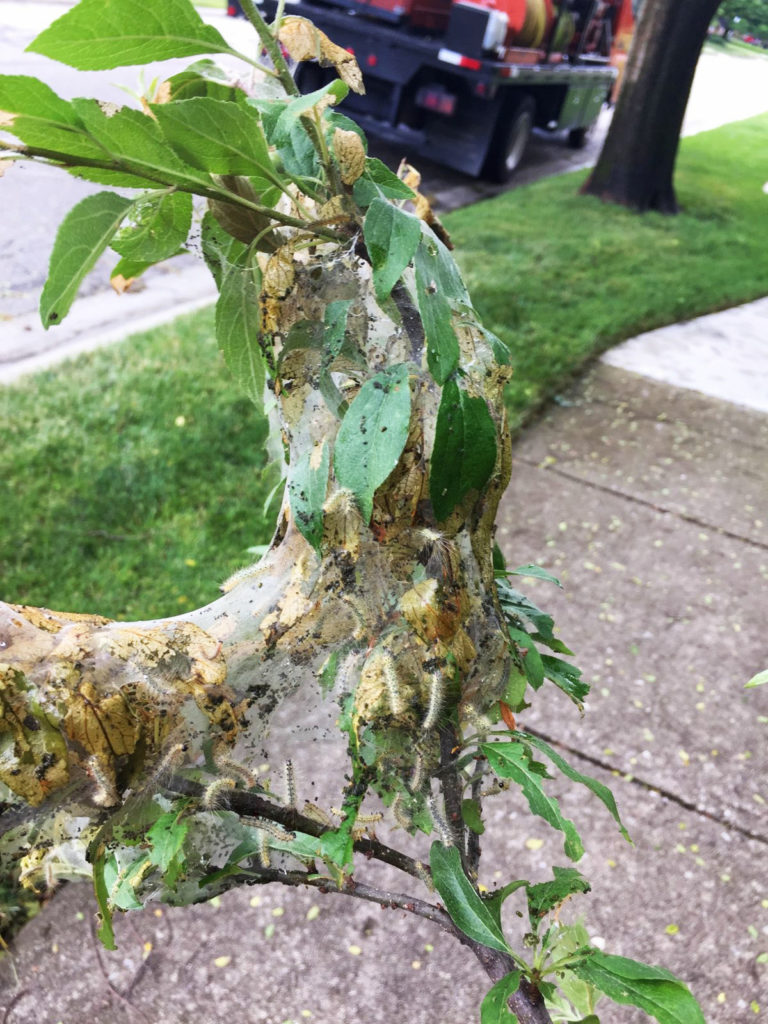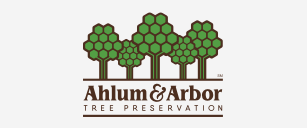How The Changing Seasons Can Attract Unwanted Pests
As summer draws to a close and we begin to welcome these chillier months it’s time to keep an eye out for the health of your trees. The changes in weather can attract many unwanted pests that can ultimately hinder the strength, attractiveness, and lifespan of your trees.
The Fall Webworm
This pest tends to appear in late summer and early fall, known for their large webs in tree branches. These webs are made up of caterpillars, dead partially eaten leaves, and fecal droppings. These caterpillars may feed on nearly any type of tree, especially elm, walnut, hickory, and redbud. Their webs may be small, only enveloping a few leaves, or large enough to cover whole tree limbs. Most commonly these webs are seen at the end of the tree’s limbs.
Most of the time these caterpillars will not kill the tree, but along with how unsightly they are, they are very damaging to the health of the tree’s leaves. The best method of treatment is to prune the infected branches and spray a treatment around the affected areas.
The Mimosa Webworm
Active during mid to late summer through early fall, the Mimosa Webworm is commonly spotted on honeylocust tree branches. During the larvae stage, this caterpillar will enclose a section of leaves in a web to feed. Their habits cause the foliage to turn brown and die. In some cases, they can be so damaging they cause the tree to look completely brown. As the weather gets colder, the more mature larvae may begin using their silk strands to retreat into your home or other dwellings to prepare for the season’s change. When you spot the Mimosa Webworm, let us know. We will come out and spray for these pests, keeping your tree happy and healthy.
The Bagworm
Emerging from its cocoon during late spring and early summer, these pests feed on over 100 plant species. They can be easily identified by their dry bag-like cocoons that hang off branches of trees and shrubs. These cocoons are often made up of the same material as the tree they rest in, acting as camouflage, making them tricky to find. When these caterpillars first emerge, they are often spotted by the small holes they leave in foliage. As they mature, they are often carried by the wind to new trees, becoming especially damaging to evergreen plants. It can be hard to spot these pests until damage has been done, but there are many treatments that can help trees overcome this invasion. Typically we will treat for bagworms on your trees mid to late July through early August.

The Eastern Tent Caterpillar
Mainly active during early spring, these pests feed on budding fruit trees. They can travel quite far, crawling over plants, roads or lawns to reach their intended feast, becoming quite a nuisance. In a short amount of time, these caterpillars can cause a great deal of damage. In most cases, trees will be able to regrow a new crop of leaves, but a quick application of a pesticide treatment can eradicate the issue all together. The best way to tell these pests apart from others is that their nests and tents are often building in the union of tree limbs (where two limbs meet near the trunk of the tree). Affected trees can be treated with an insecticide spray to keep them from being damaged.
We can help!
We want to keep your trees healthy and looking great throughout every season. If you notice, or suspect, any of these pests calling your trees their home, give us a call!

